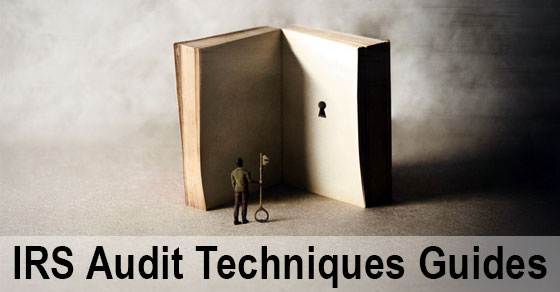In order to prepare for a business audit, an IRS examiner generally does research about the specific industry and issues on the taxpayer’s return. Examiners may use IRS “Audit Techniques Guides (ATGs).” A little-known secret is that these guides are available to the public on the IRS website. In other words, your business can use the same guides to gain insight into what the IRS is looking for in terms of compliance with tax laws and regulations.
Many ATGs target specific industries or businesses, such as construction, aerospace, art galleries, architecture and veterinary medicine. Others address issues that frequently arise in audits, such as executive compensation, passive activity losses and capitalization of tangible property.
Unique issues
IRS auditors need to examine different types of businesses, as well as individual taxpayers and tax-exempt organizations. Each type of return might have unique industry issues, business practices and terminology. Before meeting with taxpayers and their advisors, auditors do their homework to understand various industries or issues, the accounting methods commonly used, how income is received, and areas where taxpayers might not be in compliance.
By using a specific ATG, an auditor may be able to reconcile discrepancies when reported income or expenses aren’t consistent with what’s normal for the industry or to identify anomalies within the geographic area in which the business is located.
Updates and revisions
Some guides were written several years ago and others are relatively new. There is not a guide for every industry. Here are some of the guide titles that have been revised or added this year:
- Retail Industry (March 2021),
- Construction Industry (April 2021),
- Nonqualified Deferred Compensation (June 2021), and
- Real Estate Property Foreclosure and Cancellation of Debt (August 2021).
Although ATGs were created to help IRS examiners uncover common methods of hiding income and inflating deductions, they also can help businesses ensure they aren’t engaging in practices that could raise audit red flags. For a complete list of ATGs, visit the IRS website here: https://www.











